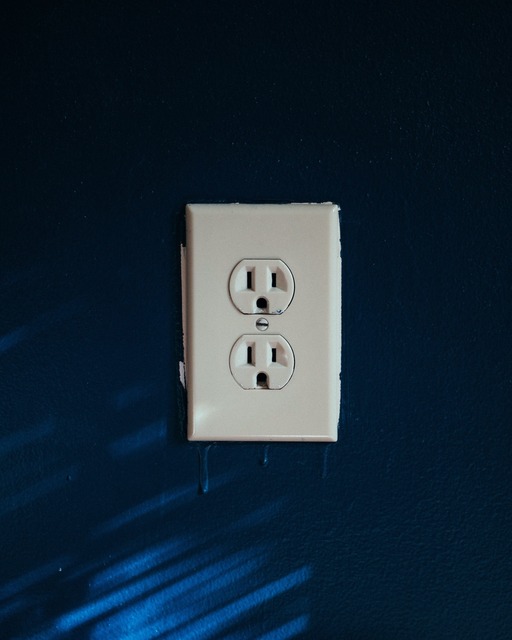Dopamine Detox: Why You
Should Give It A Go

Pleasure. It is what we think about most, if not all the time.
The smell of the cookies being baked in the oven, the unreasonable amount of time scrolling on social media, excessive shopping, nonstop gaming… you get it.
We gain pleasure by doing activities as simple as online “window” shopping on Etsy, and as extreme as the use of recreational drugs.
The swipe left, swipe right… for sure you understand the reference.
These are some sort of rewards that we give ourselves.
Chances are, you’re here because you’re curious about what this popular wellness “hack” is all about that you might have heard of on social media or from your friends.
This “hack” apparently helped a lot of people become more productive and, in a way, helped them process their very raw thoughts and feelings, resulting in them achieving a greater state of mindfulness. This hack is called dopamine detox, sometimes referred to as dopamine fasting.
In this article, we’ll get into the deeper details of dopamine detox. But first, what does it really mean?
What is Dopamine Detox?
DISCLAIMER: The benefits mentioned in this article are purely based on anecdotal evidence shared by people on social media.
Dopamine detox is a mindful approach that involves abstaining from the activities that usually give us pleasure. The detox can last for a few hours, several days, or a month. It is a wellness hack that encourages embracing boredom after cutting your “highs,” or staying away from pleasures, in order to “reset” your overstimulated brain.
People trying a dopamine detox seek to disconnect themselves from everyday stimuli. Folks replace these addictive activities (social media, Netflix, gambling, etc.) with less impulsive habits and better lifestyle choices.
There’s more to it than just boosting one’s productivity.
It’s more like tricking your brain to take back control of your life.
A Trendy Wellness Hack
After the hot Silicon Valley trend for techs and executives fad in 2019, the term ‘dopamine detox’ and its reputation echoed on social media even more after 2-3 years. It made its comeback in 2022 and became a part of pop culture, fitting right into the self-development and wellness side of social media, especially on TikTok and YouTube.
Apparently, this “taking back control of your life” method is something that many content creators and influencers in the self-development industry promote.
Sadly, some of these influencers promote the wrong concept of dopamine detox. Emphasis on “some.”
Some have exaggerated by saying that you should be alone, not talking to people, not going to the gym… basically, what they’re trying to say is that you should either be doing something productive or doing nothing at all.
But for a moment, let’s not shine a light on what these influencers have to say. It’s valuable to also acknowledge the unheard experiences and insights of everyday folks.
Here are some testimonials we’ve found on Reddit:
Comment
by u/Just-Seaworthiness39 from discussion has a "dopamine detox" ever truly worked for any of you?
in productivity
Comment
by u/Brettelectric from discussion has a "dopamine detox" ever truly worked for any of you?
in productivity
There are countless testimonials across different social media platforms that share similar experiences with these “successful” dopamine fasting stories.
Just from reading these stories, it’s hard not to form the conclusion that doing a dopamine detox does have great benefits.
Facts About Dopamine Detox
Dopamine Detox: Backed by Science?
Dopamine detox is not a scientifically researched approach, there is no scientific evidence to support this method.
Dopamine fast or detox was created and popularized by Dr. Cameron Sepah, a psychiatrist based in California. Much of his research about it was based on cognitive behavioral therapy (CBT) techniques, which is considered the gold standard treatment for impulse control disorders. His goal was to primarily get rid of his clients’ dependence on certain stimuli. One very common example of this is getting social media notifications on your phone.
Are you familiar with Ivan Pavlov’s famous classical conditioning experiment, where he would ring a bell every time he fed dog?
Eventually, the dog associated the bell ring with food, and even when there was no food, just the sound of the bell alone would make the dog drool. This goes to show that brains can learn to connect things, like a bell and food.
Now, Sepah is using a similar idea for dopamine detox. He wants us to learn that we don’t always need quick rewards, like checking our phones.
So, when we hear the ‘ding’ of a notification, our brain doesn’t always need to react with excitement, nor do we need to break into a grin from ear to ear when we see an interesting item on Amazon marked down by 40%, which ends up being a fake discount anyway.
This was mainly his intention for the concept of dopamine detox, not this absurd trend of completely removing all sources of pleasure in one snap. Some even went too far as avoiding all social activities… even eye contact. It’s kind of wild, isn’t it? They avoided eye contact because it excites them, it’s a “pleasure” to them.
You see, the concept of the dopamine detox trend that we know of is actually a misnomer. Sepah said that himself too.
Meditation, on the other hand, is a popular approach that is known to be more effective in achieving a better state of mindfulness. And unlike dopamine detox, it is scientifically proven.
What Do Professionals Say About It?
The term “dopamine detox” is inherently problematic and not scientifically correct at all. Dr. Sepah himself clarifies that the name should not be taken literally.
He mentioned in his blog post that we are actually not fasting from dopamine itself, but from the impulsive behaviors that it reinforces.
Dr. Anna Lembke, a psychiatrist and author of Dopamine Nation, also said in a BBC Reel video that when you’re doing a dopamine fast, you’re not fasting from dopamine. What you’re doing is you’re fasting from the substances or the behaviors that cause a release of dopamine in the reward pathway.
Sepah clearly emphasizes in his protocol that dopamine fasting is NOT:
– reducing dopamine (the goal is to reduce impulsive BEHAVIOR)
– avoiding all pleasure (focuses only on specific behaviors that are problematic for you)
– social isolation (actually encourages values-aligned health behaviors)
– rebranding meditation or asceticism or sabbath (doesn’t involve meditating or not working)
– vacation (many treat vacations as an excuse to indulge in unhealthy habits)
But if you’re really interested in doing this, you have got to do it the right way.
It’s a common misconception that there are only two options when you’re doing a dopamine detox, the ALL or NOTHING, which is so wrong on so many levels. And we’ll get to that eventually.
So, what are the dopamine detox rules then?
What To Avoid During Dopamine Fasting?
Some would say to avoid social media, binge-watching shows, junk food, and even listening to music.
MUSIC.
Not music…
But then again, when we say “pleasure,” it’s a very subjective topic. Everyone for sure has their own definition of “pleasure.”
Dr. Sepah clarified that he DOES NOT prescribe a list of things that you cannot do, and that if you have zero unhealthy habits that you would like to spend less time on, then you probably don’t have to do it at all.
So no list of rules. Got it.
How To Effectively Do It (a step-by-step process)
1) Identify your impulsive behavior.
If you find that a particular behavior is causing you distress (you’re bothered by how much you do it), impairment (interferes with your optimal social or school/work performance), and addictiveness (you want to cut down, but cannot consistently do so), then you may want to target that behavior for dopamine fasting.
Sepah identifies six categories of impulsive behaviors as targets of the dopamine fast:
- emotional eating
- gambling or shopping
- porn or masturbation
- thrill or novelty-seeking behaviors
- recreational drugs
You don’t really have to abstain from all of these; only the ones that you know you’ll have a hard time spending less time on.
2) Choose your fasting schedule.
Switching abruptly from always doing exciting things and getting quick rewards to suddenly stopping everything isn’t a good plan for the long run.
Imagine attending a meditation session just 10 minutes after wildly partying at the club. Not saying it’s not doable, but it doesn’t make sense.
Extreme solutions may seem more appealing than taking the consistent baby steps. But it doesn’t work like that. And chances are you’re just bringing more harm to yourself. Just like going cold turkey, half of individuals with an alcohol use disorder who suddenly stop drinking experience a set of symptoms.
So instead of completely cutting out all things that mean “pleasure” to you, set limits and choose a fasting schedule that works for you.
Dr. Lembke recommends a 30-day dopamine fast, as she discussed in her book Dopamine Nation that it takes a month of dopamine fasting to kick the habit. Dr. Sepah also has a different suggestion.
While it’s great to have a fasting schedule that we can follow, it is important that you experiment for a short period of time first. Both of these professionals even clarified that their dopamine fasting schedule suggestions are merely just suggested guidelines, and not strict rules.
Could be a day or an hour. Start with something that feels doable.
3) Create barriers.
Creating barriers is a fundamental aspect of traditional dopamine fasting. This step is all about introducing obstacles that discourage you from engaging in undesirable habits.
Some examples of creating barriers could be physically placing objects out of immediate reach or sight, intentionally creating inconveniences, not spending a lot of time with people sharing the same habits, using website blockers, and even giving someone else control of your things like credit cards, or making them hide the key to your PS5 that’s locked in a cabinet.
Real game-changer. Right?
4) Choose beneficial alternatives.
Replace these addictive activities of yours with less impulsive habits and better lifestyle choices.
Like we said earlier, it’s a common misconception that you only have the option to do the all or nothing approach. You don’t have to “do nothing” or just meditating during a dopamine fast, unless you’d like to. Choose a healthier alternative that fits your personality and interests. It could be:
- exercising or cooking healthy recipes
- volunteering
- spending time with pets
- creating art (painting, songwriting, etc.)
- learning a skill or listening to podcasts
- having insightful conversations with people you’re close with
- playing an instrument
- journaling
Again, you can choose whatever you feel works best for you.
5) Truly understand why you’re doing this.
Self-explanatory.
Being aware of the reasons why you want to start doing a dopamine detox is key to your willingness and consistency, which will soon lead you to live a better and more disciplined lifestyle.
Do it because you want change to happen. Not solely because you want to jump on the bandwagon.
Why You Should Go For It
WHY SHOULD YOU GO FOR THE MODIFIED AND CORRECT VERSION OF DOPAMINE DETOX?
As we have repeatedly clarified, there is technically no scientific research backing this method, but its concept revolves around cognitive behavioral therapy (CBT). We can only share our opinions based on anecdotal evidence from other people’s stories that were shared on social media and insights from professionals.
The benefits speak for themselves. Boosted productivity, improved focus, stress relief, better sleep, lower blood pressure, having the time to think clearly—you name it. Plus, you’re giving yourself a chance to try new things or perhaps improve your skills on something, that in the end you might thank yourself for.
Instead of unnecessarily challenging yourself by trying it for a long period of time, why not try doing it for about 6 hours first, or why the hell not just go for at least an hour. Nothing’s better than experiencing the real thing yourself so you’ll know if you’re comfortable doing this.
A dopamine detox isn’t about challenge, it’s about change. It’s a lifestyle. It’s not some sort of pill that you take to “reset” your brain, like other people have interpreted it.
And first off, one should never do a dopamine detox just for the sole reason of “challenging” oneself. It doesn’t work like that.
Because if you’re only in it for the sake of “challenge,” there’s a great chance that you’ll come back to these addictive habits after “trying” a dopamine detox, with an even stronger urge this time. This makes your dopamine detox experience useless.
It always has to be done with genuine intent to effectively change a part of your lifestyle.
Here’s another comment on Reddit that’s worth sharing.
Comment
by u/mamaMAOricia from discussion Doing a DOPAMINE detox increased my Productivity 10 fold
in selfimprovement
Notice how this Redditor didn’t abstain from all activities that produce dopamine? This, right here, is one great example of how to do a dopamine detox.
And while some people have proudly shared their success stories of doing dopamine detox, it is important to remember that it might not be as effective for everyone, as it all comes down to two things: one’s willingness to minimize their exposure to addictive activities and how deep their understanding of the concept is.
Because if you only do this to jump on the bandwagon, you might not really get the gist of it; you might do it the wrong way, and it just ends up not working for you.
If you can’t stop checking social media notifications on your phone while you have deadlines to catch, turn on DND (Do Not Disturb) mode for as long as needed so it’s easier for you to focus on the more important things to do.
Or perhaps if you want to start minimizing this unhealthy habit of online shopping, you might wanna try opening multiple bank accounts and setting a monthly spending limit for shopping. That would be a great start.
Doing a dopamine detox can be as simple as that. It’s not meant to be extreme. It never was.
The purpose of doing a dopamine detox is not to remove happiness from your life or intentionally make you sad, but to replace negative dopamine (impulsive behaviors) with healthy ones and make it a lifestyle. The things we want aren’t necessarily the things that we like.
Let’s get back to the example of setting a spending limit for your shopping budget. The negative dopamine in that example is the unhealthy habit of online shopping, while the result of having a much better financial budget represents the healthy dopamine that we want to achieve. We love the result, but we might not like the actual implementation of the solution.
The Takeaway
If one wishes to do a true “dopamine detox,” it is literally impossible to do because the brain continues to produce dopamine naturally. But making an effort to distance yourself from pleasurable activities and substances that are most likely addictive or can become addictive over time can contribute positively to a person’s mind and lifestyle.
People may be able to develop a greater state of mindfulness by avoiding certain behaviors such as spending hours scrolling on social media or doomscrolling, and it comes with its own benefits. Stress relief, better sleep, and lower blood pressure are a few of these.
The modified version of dopamine detox is not about removing happiness from our lives or intentionally making us sad, but about replacing negative dopamine (impulsive behaviors) with healthy ones and making it a lifestyle.
It’s not about trying to prove that you can do extreme challenges but rather focusing on taking consistent baby steps that can lead to a real change.
If you believe that you or someone you know is showing signs of addiction, you can reach out to the following organizations for immediate support and advice:
– Substance Abuse and Mental Health Services Administration: 800-662-4357 (TTY: 800-487-4889)
– National Suicide Prevention Lifeline: 800-273-8255
The information provided in this article is intended for informational purposes only and should not be considered a substitute for professional medical advice, diagnosis, or treatment in any way. You acknowledge and agree that King Kat shall not be liable for any claim, loss, or damage resulting from the use of, or reliance on, any information in the article.

Katarina Rachel is the founder of King Kat and also one of its content writers and editors. A multipassionate who is a fashion stylist and blogger, musician-producer, solopreneur, social commentator, and former social media manager-marketer, with a huge enthusiasm for lifestyle, wellness, online careers, entrepreneurship, controversies, philosophy, and social media.
YOU MIGHT LIKE






